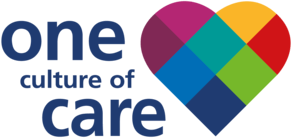Our Eye clinic team are proud to have hosted an event in collaboration with the Shipley HMRC design team and The Royal National Institute of Blind People (RNIB) to bring patients, designers for accessible IT systems, clinicians and eye care partners together.
Consultant ophthalmologist Rehan Khan, said: "It was fantastic to see that many of the patients that attended the event signed up to take part in future user research sessions with HMRC. It was also very nice to have real conversations with patients, take time to answer their questions about their eye therapy and future therapies on the horizon without being in the hurried atmosphere of the eye clinic."
She said it was an event that took away the traditional doctor patient barriers and as we look to the future of healthcare using more IT based tool, it was a fantastic opportunity to learn from our visually impaired patients, about what good IT design is for them.
Here she explains more:
"After receiving many questions from patients in eye clinic about future gene therapies we saw an opportunity to benefit visual impaired patients and staff. As passionate information advocates we wanted to expand upon the awareness and understanding of access needs and novel gene therapies and stem cell therapies which have been recently cvered in the media.
"Our aim was to provide a positive information exchange experience for our patients by answering queries on gene therapy and stem cell therapy. We also wanted to actively listen with empathy with the design team and visual impairment team on hand about what makes good IT design for visual impaired users which is why HMRC joined us..
"Building on a connection that Rehna Khan had with Shipley design team lead Jackie Brownlee, we began discussions, in early 2019, to understand how we can work together to bring patients with varying conditions affecting their visual acuity and the IT systems designers together.
"We planned the event with great excitement as the first collaboration of its kind which took shape as a three-way listening event at Acre Mills in Huddersfield.
All about the event
The theme was accessibility of information. A three-way flow of information; firstly from the NHS and clinical partners to the patients regarding advances in retinal therapy information secondly, from our design team to the patients and carers on how we improve digital services through user research and user centred design and thirdly, from patients to us about what makes good design for technology and the ways they communicate with official bodies and corporations including the Government and the NHS.
Twelve patients attended the event which started with a talk from consultant Kamron Khan on gene therapy and stem cell therapy followed by a Q&A session. Lorna Clark (low visual aid team), Alice Elliot (Eye clinic liaison officer from RNIB), and the visual impairment team (Jeanette Hainsworth and Tracey Craven) were all on hand to facilitate the discussions that followed.
User Research & Design
The second part consisted of a presentation from HMRC on how and why we conduct user research and the importance of user centric design principles. HMRC explained that they wanted to know how they could improve the design of their online materials for people with access needs so that we could insure inclusivity within our designs.
Group discussions
Following the HMRC presentation we asked the patients, carers and eye care partners to split into 4 groups to discuss their interaction with digital devices and software and how this has changed as their eye conditions have progressed. We asked several questions of focus including:
What technology do you use to complete tasks online?
What’s the best experience you’ve had when using online services How has your experience with technology changed over time?
What we learnt
Each group discussion was able to draw upon the experiences of using digital devices and provided our researchers and designers with insight into using online services from a different perspective. The patients and carers in the session felt there were several barriers to using online services including; physical barriers due to their level of visual acuity, lack of confidence in using digital and the usability of services.
The patients explained what assistive technology or accessibility settings they use to help them in accessing digital services on their devices. These ranged from increasing the text to a large font, using zoom and use of screen readers. Exploring the patients experiences with digital over their lifetime was a fantastic way for our team to understand how the needs of our users vary and evolve over time.
We also gained insight into the frustrations of:
Using touch screen systems in reception areas Websites being difficult to navigate/use resulting in needing to call the company Unreliable text message reminders of appointments being troublesome Feeling forced to use digital in order to receive competitive priced utilities Uncertainty around when to inform the DVLA about changes In spite of most of the participants having negative experiences with using digital, all of them had devices and were trying to engage with digital in some way. Our team felt like, with the right support in place, the participants may feel more positively about using digital channels.
During the discussions we received some very positive comments from the patients regarding our user research activity including; ‘I’m really surprised government does this, I didn’t think they would want to help us’ ‘It’s really good that you’re doing this’
This really emphasises the benefit of empathy building and knowledge sharing events such as these for increasing the understanding of the way we work in digital within government.


